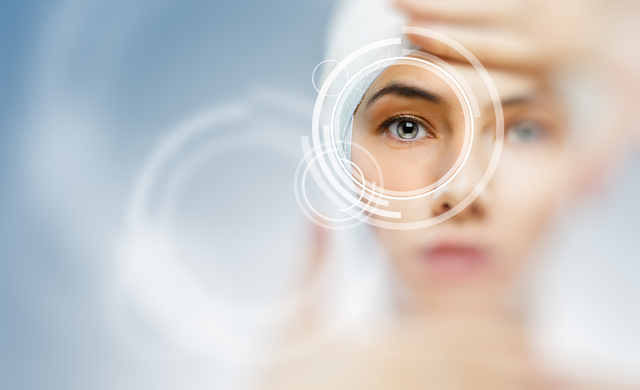
The Best Eye Health Tips for a Lifetime of Sharp Vision
04/22/2022 06:00AM | 2414 viewsHere’s what to focus on to keep your eyesight strong and clear, according to ophthalmologists.
Number one on the list of Americans’ worst health nightmares (ahead of even losing memory or a limb!): vision loss. A bad-dream scenario, for sure, but the truth is that an estimated 61 million of us are at high risk for it, according to Johns Hopkins researchers. “The eyes have many delicate parts, so they simply don’t age very well,” says Irene Barbazetto, M.D., Ph.D., a clinical instructor of ophthalmology at NYU Langone Health in New York City.
These parts work together in a complex, amazing way to give you the sense of sight. Here’s how the eye works:
- Cornea: Sight begins here: Light bounces off whatever you’re looking at and enters this transparent tissue on the orb’s surface, and the cornea bends the light to make the image clearer.
- Iris: The colored part of the eye (surrounded by the bright white sclera) doesn’t just look beautiful—it’s in charge of changing the size of the pupil.
- Pupil: This opening in the iris’s center widens to welcome light when it’s dark and narrows to restrict light when there’s too much, letting us see objects both in daytime and at dusk.
- Lens: The light bends even more once it hits the lens, which is situated behind the iris. This structure controls focus, letting us take in, say, a field of flowers from far away or a single blossom up close.
- Vitreous humor: Taking up most of the space between the back of the lens and the retina, this clear gel helps keep the eye rounded and nourished.
- Retina: The light that comes in via the cornea and through the lens winds up at this tissue in the back. Here, photoreceptor cells (including rods and cones) transform light into electrical pulses. The tiny area in the center of the retina called the macula is responsible for our central vision, giving us the ability to see what’s directly in front of us.
- Optic nerve: The electrical signals travel through the million-plus fibers of this nerve to enter the brain, which identifies the pulses as whatever object we’re viewing.
Best ways to keep your eyes healthy
There’s much you can do to keep your eyes in healthy working order. Top of the list is getting regular checkups (including a dilated eye exam so a professional can look at your eyes’ inner workings) to help spot conditions that put you at risk.
Eat the top eye health foods
Carrots, squash, and pumpkin are full of vitamin A—essential to eye health, says Elena Roth, M.D., a comprehensive ophthalmologist at Bascom Palmer Eye Institute in Miami. Dark leafy greens like spinach, kale, and collards are high in the eye-friendly antioxidant lutein.
Stop smoking
Quitting smoking lowers the risk of not only lung and heart disease, but also age-related macular degeneration, cataracts, and optic nerve damage.
Shield your eyes
Wear the best sunglasses you can find, even in winter; they help protect your eyes from the sun’s ultraviolet rays, exposure to which can lead to cataracts and some cancers. Look for large lenses and 99% to 100% blocking of both UVA and UVB radiation. And put on safety goggles or eye guards when using a hammer, a nail gun, or chemicals that might splash, as well as during any sport involving a ball.
Keep your eyes clean
If bacteria get in, that can cause an infection with uncomfortable symptoms like itching, swelling, discharge, pain, and/or difficulty seeing. Toss old eye makeup, and replace your mascara about every three months. If you wear contacts, make sure your hands are clean when putting them in, and remove them at night even if they’re labeled for long-term wear—sleeping in them ups your risk tenfold because it gives bacteria time to multiply. “Contact lens wearers may introduce germs as they insert the lenses and are at high risk for eye infections,” says Vatinee Bunya, M.D., codirector of the Penn Dry Eye & Ocular Surface Center and an assistant professor of ophthalmology at the University of Pennsylvania Perelman School of Medicine.
Break up screen time
Staring at TVs, phones, or computer screens can cause dry eyes, blurry vision, or headaches because we blink less often than we should. Use the 20-20-20 rule to relax and rewet your eyes: Every 20 minutes, look 20 feet ahead for 20 seconds.
Have eye drops on hand
The best eye drops can help soothe dry eye or calm itching from allergies or other irritants by flushing out particles. A pro tip: Store preservative-free single-use artificial tears in your refrigerator. The coolness will provide an extra bit of soothing relief.
Monitor changes to your eyes
Do you notice dark specks drifting across your line of sight? Those are floaters, which occur when clear gel behind the eye clumps, but they’re not usually dangerous and there’s nothing you can do to get rid of them besides wait patiently. If new ones suddenly appear and are accompanied by flashes of light or shadows, though, see your doctor to rule out a retinal tear. And if you start to notice that the white of your eye is red or the inside of your lid is swollen or itchy or has crusty discharge, it may be pink eye, a minor but super-contagious virus that inflames the mucosal covering of the eye. Be vigilant about handwashing to avoid spreading it to your other eye (or other people!), and stay away from work or school until after symptoms have totally disappeared, which takes about seven to 10 days.
Protect your eyes from these 5 common vision problems
Early diagnosis and treatment is the best way to deal with potential sight stealers. An eye exam may also detect red flags that signal more systemic conditions like diabetes, hypertension, rheumatoid arthritis, and even risk of Alzheimer’s.
Refractive errors
It sounds scary, but this simply implies nearsightedness or farsightedness and can also refer to astigmatism (distorted vision at all distances) and presbyopia, the loss of up-close focusing ability (hello, reading glasses!). Genetics, age, and gender may play a role in eye issues—in fact, women 40 and over experience 14% more refractive issues than men that age.
What helps: Glasses, contact lenses, or laser surgery can temporarily (or permanently) enhance your vision.
Cataract
This vision-blurring problem occurs when proteins in the lenses clump together into clouds, and it typically appears in older individuals. “When people get old enough, almost everyone has a cataract,” says Dr. Barbazetto. Lots of sun time, taking steroids, having diabetes, or smoking or drinking alcohol habitually can up your risk. An eye exam can detect a cataract, but you’ll probably notice it first: Colors will start to look faded, you’ll see a halo around light, or you won’t be able to see easily at night.
What helps: If your cataract is small, try using a magnifying glass while reading and replacing your lightbulbs with brighter ones. If a cataract gets too big, the cure is outpatient surgery to implant an artificial lens.
Macular degeneration
As we age, the macula may develop deposits or fill with leaky blood vessels, impairing vision—you might see a gray or black spot in your central vision but still be able to observe things in the periphery. That’s because the macula helps us see right in front of us. Nearly 2 million Americans have age-related macular degeneration.
What helps: Treatments have been shown to slow progression and save sight, which is why it’s crucial to diagnose AMD early, Dr. Barbazetto says. Once you hit your mid- to late 40s, you should have an eye exam every two years, or annually if you have a family history of AMD. If early to intermediate AMD is diagnosed, you can take special supplements packed with vitamins C and E, zinc, lutein, and other nutrients to slow down the damage.
Glaucoma
Built-up pressure in the eye can cause damage to the optic nerve over time; this has an impact on peripheral vision first, with total blindness a potential eventual result. Anyone can get glaucoma, but age and genetics (especially if you’re African American or Hispanic/Latinx) can up the odds.
What helps: Medicine, lasers, or surgery can help with disease progression.
Diabetic retinopathy
Eye problems can be a complication of Type 2 diabetes, as high blood sugar damages retinal vessels over time. “Strict glucose control can help prevent this complication,” says Dr. Roth. If you have diabetes, eat right, exercise, take all prescribed medications, check your blood glucose regularly, and get a yearly dilated retinal exam.
What helps: Besides keeping up with habits that support balanced blood sugar, lasers, injections, or surgery can be effective—but these can only help before the loss of sight, says Dr. Roth, which is why early diagnosis is crucial.











Post your Comment
Please login or sign up to comment
Comments